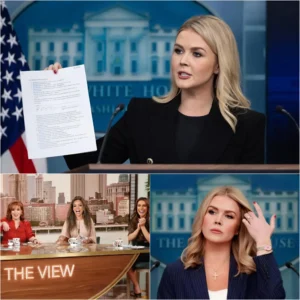In recent years, the visibility of drag culture has surged, becoming a vibrant part of mainstream entertainment. With events like drag queen story hours gaining popularity in libraries and community centers, the discussion surrounding their appropriateness, especially concerning children, has intensified. Recently, country music star Reba McEntire expressed her concerns about drag queens being around kids, a statement that ignited heated debates across social media and public forums. This controversy reflects deeper societal tensions regarding gender expression, childhood innocence, and the evolving understanding of family and identity.

At the heart of this discussion is the nature of drag itself. Drag performance is often characterized by exaggerated femininity and masculinity, blending humor, artistry, and social commentary. Many drag queens use their platform to promote messages of self-acceptance, love, and celebration of diversity. Events like drag story hours aim to engage children with fun, imaginative storytelling while introducing them to the idea that gender expression can be fluid and multifaceted. Advocates argue that such exposure fosters empathy and acceptance in children, preparing them to navigate a diverse world.

Reba McEntire’s comments, however, resonate with a segment of the population that holds more traditional views regarding childhood and entertainment. Her perspective reflects a concern that drag performances may present themes that are inappropriate or confusing for young audiences. This viewpoint often stems from a desire to maintain childhood innocence, believing that children should be shielded from adult themes until they are old enough to understand them.

This divide in opinion often revolves around differing definitions of what constitutes “inappropriate.” For some, the concern is about the potential for children to be exposed to sexualized content or themes of gender fluidity that challenge traditional norms. For others, the worry is less about the content itself and more about the environment created by such performances, which they fear may disrupt established notions of gender roles and family structures.
Opponents of McEntire’s stance argue that drag performances are not inherently sexual or inappropriate for children. They point out that many performances focus on storytelling, creativity, and self-expression rather than adult themes. Supporters of drag in children’s contexts assert that such interactions can help children learn about diversity in a safe and playful environment. They believe that allowing children to experience different forms of expression encourages open-mindedness and acceptance, counteracting stereotypes and prejudice.
The dialogue around this issue is also deeply intertwined with broader cultural conversations about LGBTQ+ rights and representation. For many in the LGBTQ+ community, drag is not merely entertainment; it is a form of identity and expression that has historical roots in resistance against marginalization. Drag queens have long been at the forefront of LGBTQ+ activism, using their art to challenge societal norms and advocate for equality. Thus, any discussion that frames drag as inappropriate for children can be seen as part of a larger attempt to limit LGBTQ+ visibility and acceptance.
The controversy has also highlighted the complexities of parenting in an increasingly diverse society. Many parents grapple with how to navigate discussions about gender and sexuality with their children. For some, the presence of drag queens in public spaces can serve as an opportunity for important conversations about acceptance, diversity, and the fluidity of gender. Others may feel unprepared or uncomfortable addressing these topics, leading to a sense of protectiveness over their children’s exposure to such ideas.
The divide is further complicated by the role of social media, where discussions about drag and children can quickly escalate. Opinions are often polarized, with each side passionately defending their views. Online platforms can amplify voices that either advocate for inclusivity or call for a return to traditional values. This dynamic creates an environment where nuanced conversations can be overshadowed by heated rhetoric, making it challenging to find common ground.
As society navigates these complex issues, it is crucial to recognize the importance of dialogue and understanding. Those who support drag culture and its presence around children often emphasize the values of inclusivity and acceptance. Conversely, those who share McEntire’s concerns may advocate for the protection of childhood innocence based on their deeply held beliefs. Both perspectives arise from a desire to care for children, albeit in different ways.
Moreover, it is essential to consider the broader implications of this debate. Discussions around drag and children intersect with issues of censorship, artistic freedom, and the rights of parents to make decisions about their children’s exposure to different ideas. In a pluralistic society, finding a balance that respects diverse viewpoints while promoting understanding and acceptance is a formidable challenge.
One potential path forward is fostering community discussions that involve parents, educators, and LGBTQ+ advocates. Creating spaces where individuals can share their experiences and concerns can help bridge gaps in understanding. These conversations may lead to better-informed perspectives that prioritize the well-being of children while respecting the importance of diversity in expression.
In conclusion, the controversy surrounding Reba McEntire’s comments about drag queens and their presence around children encapsulates a broader cultural dialogue about gender, childhood, and societal values. While the fears surrounding childhood exposure to drag performances stem from a desire to protect and preserve innocence, advocates for drag argue that such interactions can promote understanding and acceptance. As society continues to evolve, navigating these conversations with empathy and an open mind will be crucial. Ultimately, fostering an environment where diverse expressions of identity can coexist alongside protective measures for children may lead to a more inclusive future.






